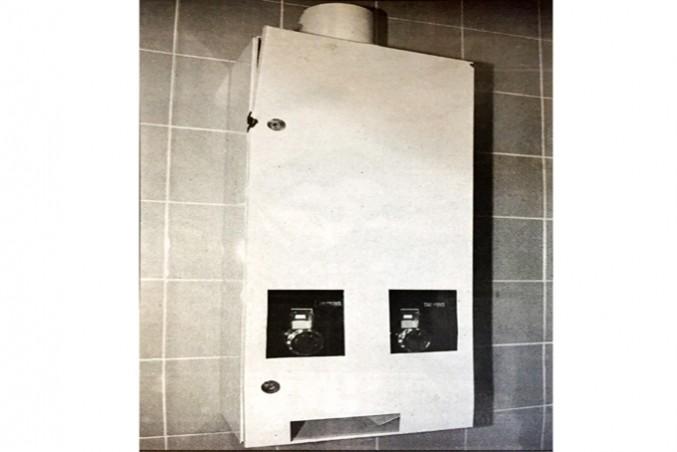There are over 8,000 full-time female students at Ryerson and only 40 tampon machines. Why is it so hard to find the product every woman needs?
By Molly Seewald
Imagine going to the bathroom and not finding toilet paper in any of the stalls. On the wall, a large mechanical dispenser sells sheets of toilet paper for 25 cents. You scrounge for some change, put it in the machine and nothing comes out.
This scenario is unlikely. In North America, toilet paper is considered to be an essential sanitary product that should be provided in every bathroom, free of charge. But the same attitude does not hold true for tampons, an essential product for the more than 80 million menstruating women on the continent. At Ryerson, where over half of the student body is female, tampons are a hard thing to find.
Until last year, tampon machines were not available in Ryerson bathrooms at all, and there are now only 40 machines to provide tampons for the school’s over 8,000 full-time female students.
“I don’t know if it’s because I am a woman, but I think it’s an amazing situation,” said Gayle Sutton, Ryerson’s manager of custodial services.
When Sutton came to Ryerson in 1999, she said there was a lot of concern among staff, faculty and students about the lack of sanitary products on campus. She said the shortage was no long acceptable, and so in September 2000, Ryerson signed a deal with Cannon Hygiene to install and maintain vending machines in bathrooms around the school and make sure they were well stocked. But due to budget constraints, the machines were only put in “high-traffic” bathrooms, ones that are used by a large amount of students on a daily basis.
“It’s a cost factor,” said Sutton. “But Rome wasn’t built in a day, I’m not adverse to installing more if there’s a need.”
She said that Cannon Hygiene was given the deal because it would be too difficult to get janitorial staff to maintain the machines.
“We do not have the resources,” said Sutton. “I’d have to hire someone full time to do just that.”
Instead, the machines are monitored by Cannon Hygiene, an England-based company that provides sanitary products to schools and business around the world. They buy tampons for 35 cents and sell them in Ryerson for 50 cents. Ryerson makes no money from the arrangement.
The company’s Markham branch installed Ryerson’s machines, and monitors their use and conditions. If they see some machines are being used more than others, they will increase the amount of tampons that are stocked. Employees will make special visits to campus if they are told of a shortage.
“We check them twice a month during the winter and about once a month in the summer,” said Bonnie Allder, Cannon Hygiene’s director of operations. “But if anyone calls us with a problem, we’ll deal with it right away — we have people down there all the time.”
But some students believe the shortage of sanitary products reflects more than just budgetary restraints.
“It’s been an ongoing issue since I’ve been here,” said Colette Agaliotis, volunteer coordinator of Ryerson’s Women’s Centre, and a fourth-year social work student. “Nothing has been done because women are an expense.”
The women’s centre provides tampons free of charge to female students in need and say many women take advantage of the service. But the women’s centre is only open on Monday and Tuesday, leaving many women empty handed. Agaliotis and other women centre volunteers say that the school should look for a long-term solution to Ryerson’s tampon shortage.
“We make them available here but we need to address it as a wider issue,” said Zita Alexander, women’s centre co-ordinator and second year social work student. “We need to take charge and show the university that the female student body has needs that must be addressed.”
Sutton agrees that the problem is not close to being solved and that the university must go further in providing the product to Ryerson students. But she says she can only address the shortages when she knows they exist.
“The key is to call us and tell us there’s a problem,” said Sutton. “It isn’t acceptable that they’re not there and it’s time for us to put them in and service our female population.”
With files from Siri Agrell
Tampon Taboo- The fact, figures and faux-pas of sanitary products
Number of female undergraduate students at Ryerson: 8,292
Number of bathrooms equipped with tampon machines: 40
Amount Ryerson students pay for a tampon from vending machines: 50 cents
Amount Cannon Hygiene, who provides Ryerson’s tampons, pays for them: 35 cents
Nearest off-campus place to buy tampons: Dominion
Dominion’s price for Tampax tampons: $3.99 for 20 or 19 cents per tampon
Dominion’s price for o.b environmentally friendly tampons: $2.99 for 20 or 15 cents per tampon
Amount North American women spend every year on disposable sanitary napkins and tampons: $2 billion.
Number of tampons women will use over their lifetime: 11,000
In Canada, items considered essential medical devices that require safety testing: tongue depressors, bandages and dental floss.
Product that is considered “cosmetic” and therefore not bound by safety regulations: tampons
Number of menstruating women in North America: more than 80 million
Percentage of tampon market controlled by Proctor & Gamble’s Tampax: 47
Percentage controlled by Playtex: 31
In Australia, products that were classified as “personal hygiene” and therefore exempt from GST: condoms, penile clamps (for male incontinence), personal lubricants and sunscreen.
Product Australian Health Minister Michael Wooldridge compared tampons to when asked why they were not exempt from GST: shaving cream
Number of Australian ministers who opposed making tampons tax exempt when the issue was put to a vote: 63










Leave a Reply